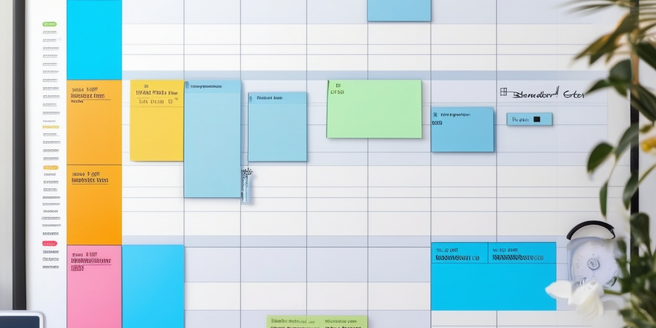
Build a Customized Personal Productivity Plan
Any successful time management strategy must begin with creating a custom productivity plan. This plan is tailored to your specific needs and lifestyle, taking into account your work schedule, personal obligations and recreational activities. Understandably, no two productivity plans are the same as they must adapt to individual preferences and routines. Along the way, it’s important to remain flexible, as unexpected events or tasks might come up. The key to developing an effective productivity plan is to clearly identify your goals, prioritize them, and break them down into manageable tasks. Plan your days, weeks, and months in advance to stay on top of your tasks and avoid last-minute stress.
Time Blocking: Maximizing Your Day, Hour by Hour
One of the most effective time management strategies is time blocking, a technique that involves dedicating specific blocks of time to individual tasks or groups of tasks. This technique allows you to visualize exactly when and where your time will be spent. It creates a structure for your day, guiding you systematically from one task to the next. Unlike traditional to-do lists, time blocking encourages a more organized and disciplined approach to your day. By allocating a specific period of time for each task, you can improve your focus and efficiency, reduce the likelihood of multitasking and make the most of your day.
Setting Priorities: A Key to Time Management Success
The core of any time management strategy is prioritization. Here’s a helpful tip: try to tackle high priority tasks, especially ones that require more focus and energy, early in the day when your productivity is naturally at its peak. It is essential to differentiate between high and low priority tasks and focus your efforts on completing tasks that matter the most first. Use tools like the Eisenhower Box to help identify what is urgent and important, versus what is not. Remember, not all tasks are created equal, and it’s better to focus on quality, not quantity.
Elimination of Procrastination: The Productivity Killer
Procrastination hinders productive work and can disrupt both personal and professional lives by slowing down efficiencies and impeding growth. Its root causes can be deep-seated anxieties, fear of failure, feeling overwhelmed, or a lack of motivation, which often leads to task delays. These can be overcome by developing strategies like breaking down complex tasks into manageable parts or eliminating distractions to create a focus-friendly environment. Rewarding yourself after completing tasks and maintaining a ‘Done is better than perfect’ mantra can also counterweight the urge to procrastinate. By understanding and addressing these root causes, applying these strategies, and prioritizing progress over perfection, you can combat procrastination and enhance productivity.
The Magic of the Pomodoro Technique: A Time Management Secret
The Pomodoro Technique is a time management tool aimed to bolster productivity and concentration, using a strategy of working for 25 minutes then taking a five-minute break. This overlooked productivity hack helps maintain focus and prevent exhaustion.
After four cycles, a longer break mirrors the natural rhythm of concentration and relaxation for health and productivity. One key benefit is the management and reduction of distractions, improving productivity and focus.
While inherently beneficial, the technique also builds discipline, enhances productivity, and reduces procrastination. Many users report improved concentration, less stress, and increased output over time.
Overall, the Pomodoro Technique represents an innovative way to increase productivity, regardless of work type or task size. Initially skeptical users may be impressed by its effectiveness, as it allows for increased accomplishment while maintaining work-life balance.
Keeping Balance: Fitting Leisure Time Into Your Productivity Plan
While productivity is important, it’s equally essential to allocate time for relaxation and leisure activities. Furthermore, engaging in hobbies or activities you enjoy can significantly improve your mood and mental health. Whether that’s reading a book, going for a hike, or painting a picture, creativity and outdoor activity have been shown to improve mental health considerably. A balance between work and leisure prevents burnout, reduces stress levels, and contributes to overall happiness. Integrate leisure activities into your schedule and treat them as non-negotiable appointments. This ensures that you have something to look forward to and that your life isn’t just all work, all the time.
